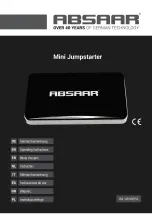
Page 1
Harmony
Remote Repair
harmonyremoterepair.com
How to Check for
Defective Buttons
Often, Harmony users suspect a button is not working and the reason may have nothing to do with actual
button hardware failure. It may be that the button is not mapped for use in an Activity, or there may be other
issues related to IR (or RF) signal transmission, or configuration issues with devices that are in the setup. It is
important to be able to differentiate actual physical button failure from these other, configuration-related issues,
and luckily, this is very easy to do! Find your model listed below and review the button testing procedure that is
listed. If your model is not listed, contact us for help and guidance.
Harmony 650/700
The Harmony 650/700 has two types of button contact technology; conductive carbon-tip and tactile button
dome. All of the ‘squishy’ buttons on these models are the conductive-tip type, and the ‘clickable’ buttons, like
the Vol/Chan toggles are tactile button domes. Although the repair process is different for each kind, the testing
procedure is the same:
1. Place the remote down on a flat surface and, without starting any Activity, allow the LCD to go to ‘sleep’
(turn off). Now, without jostling the remote, so as not to disturb the tilt-sensor (motion sensor), press down
on any button that you suspect is not working.
2. If the LCD lights up using normal pressure, then the actual button hardware is fine and any issues you may
be having are not related to button failure. However, if you need to press multiple times, or with force, then
there is something wrong with the actual button and/or contact surface. You can test every button exactly
the same way and it does not matter if the button is mapped for use or not. Once you hit a button that starts
an Activity, wait for the command sequence to complete, and you can continue testing any suspected de-
fective button using the same process.
3. Although failing tactile button domes usually need to be replaced, typically what happens with the conduc-
tive tip buttons is that some oxidation occurs on the pad on the board and this prevents the conductive tip
from making good contact. You can usually improve the performance by opening the 650 up, removing the
rubber button pads and cleaning the conductive tips and the corresponding pads on the board with a prod-
uct like DeoxIT D100L. This is superior to alcohol or using other methods to clean and improve conductivity.
Harmony 880/890 (all versions)
The Harmony 880/890 series uses tactile button domes; small, convex metallic discs that, when pressed down,
make contact with the corresponding pad on the PCB. These discs can deform with time or develop microscop-
ic pitting and corrosion and, most often, these tactile domes require replacement as cleaning the underside of
the dome and pad on the PCB is not effective. Each button should respond with a light touch. If you need to
use even slightly more pressure to activate a button (we call this ‘lazy’), it is usually a good idea to replace it.
The best way to test each button is to use the ‘Glow’ button as an indicator. The great thing about using the
Glow button is that every button can be tested, even without starting an Activity and even when a button is not
mapped to be used. This is the procedure:
1. Place the remote down on a flat surface and, without starting any Activity, allow the LCD to go to ‘sleep’
(turn off). Now, without jostling the remote, so as not to disturb the tilt-sensor (motion sensor), and, starting
at the bottom of the remote, press a button using normal pressure.





















